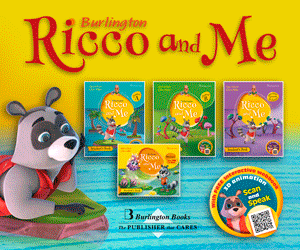Multilingual parents needn’t worry about confusing their children with multiple languages spoken at home, as new research findings out of the University of Calgary reveal children can acquire and switch between languages effortlessly as long as they start young and interact regularly in those tongues.
However, that “window of opportunity” for children to pick up languages starts to diminish by age four, with noticeable differences for those who start learning new languages at age seven or eight.
“Children acquiring two or more languages from birth acquire native competency in those languages,” said Jurgen Meisel, research fellow at the university’s language research centre and an Emeritus professor from the University of Hamburg.
“Adult learners rarely or never become native speakers of the language they learn. Those who come close make up somewhere between two and five per cent (of adult classroom language learners).”
Meisel’s most recent research findings show that from about 18 months up to age three, children have a “language-making capacity” through brain maturation during which they can acquire two or more languages without much difficulty.
That age range is when children start to grasp the grammar of language, that is, the construction of sentences.
In Meisel’s long-term studies of young children in Germany who were exposed to both German and French from birth or at a very early age, he discovered those children easily switched between the two languages depending on the situation or context.
They also showed no difficulty in grammar or sentence construction, even though the verb and subject orders are different in both languages.
On the other hand, children who started learning after the age of 7 or 8 rarely attained the capacity and confidence of a native speaker, he said.
Benefits of multilingualism range from more career opportunities, to delaying the onset of Alzheimer’s, according to research, he said.
For native French speaker Damien Hubert, it had always been his plan to raise his sons in a multilingual environment.
Hubert’s eldest son Azari, 6, was born in Mexico and quickly picked up Spanish, all the while speaking French at home with his parents.
Later, when the family relocated to Australia, Azari learned English as well and now flips back and forth between the two languages — at times sprinkling in a little bit of Spanish — depending on who he was chatting with.
Hubert, director of Alliance Francaise in Calgary, said his three-year-old son Romeo has also demonstrated a strong fluency in both French and English.
“I travel a lot and have lived in different countries, and I think it’s amazing if you have the opportunity to talk to the people and to understand them ... It’s a great advantage to speak different languages,” he said.
These research findings come just after the Calgary Board of Education reported a 30 per cent decline in the number of elementary and junior high students studying French, after the board made second language instruction optional.
Now students at 24 schools no longer have the option of learning Canada’s second official language from Grades 4 to 6, and two junior highs have cut the program because of a lack of interest.
But Sheila McLeod, director of global learning, said the board’s other second language programs are going strong and seeing increases in enrolment.
There are now 7,250 students in French immersion, an increase of more than 300 students from the last school year. The Spanish bilingual program, which saw its numbers jump from 2,168 to 2,500 from last school year, is now the largest in the country. The Chinese bilingual program, while still relatively small, grew from 265 to 385 students.
And though the language and culture program saw a decline, there are still 24,409 students choosing to learn French as a second language, McLeod said.
“We understand the importance of learning a second language. There are lots of students who fit the profile (of those in the study),” she said. “Some parents even choose to put their children in French immersion and bilingual programs, and that might be a third or fourth language. And those kids have done really well.”
While she said she recognizes the value of starting second language education at an early age, the board allows students to start certain language programs at higher grades to be inclusive.
“We want children to be able to enter (a second-language program) where they can.”
calgaryherald.com





